Catalogue > List by artist
Browse the entire list of Rencontre Internationales artists since 2004. Use the alphabetical filter to refine your search. update in progress
Astrid Rieger, Zeljko VIDOVIC
Catalogue : 2007Apple on a tree | Art vidéo | dv | couleur | 4:50 | Allemagne | 2006
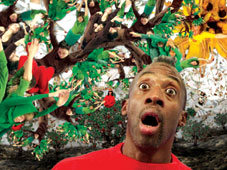
Astrid Rieger, Zeljko VIDOVIC
Apple on a tree
Art vidéo | dv | couleur | 4:50 | Allemagne | 2006
C'est une pomme sur un arbre, joyeusement accrochée en compagnie d'autres pommes, qui profite du soleil et de la caresse du vent. Cependant une pensée ne lui laisse aucun répit: elle aimerait savoir ce que c'est d'être un humain.
Astrid Rieger est née en 1979 à Kronstadt, Roumanie. Elle vit depuis 1990 en Allemagne. En 1999 elle commence ses études à la Hochschule für Gestaltung (école supérieure de design), option "communication visuelle" à Offenbach . Elle obtient son diplôme en 2006. Zeljko Vidovic est né en 1975 à Livno ? Croatie . Depuis 1998 il étudie à la Hochschule für Gestaltung (école supérieure de design) à Offenbach.
Lydia Rigaux
Catalogue : 2018Hoe kamelen leeuwen worden (How Camels Become Lions) | Fiction | 4k | couleur | 61:0 | Belgique | 2017
Lydia Rigaux
Hoe kamelen leeuwen worden (How Camels Become Lions)
Fiction | 4k | couleur | 61:0 | Belgique | 2017
“ How camels become lions ” depicts the urge for freedom. Through 4 episodes we see 4 family members in a moment when they are tired of being a camel, as a beast of burden. They realise their tasks are meaningless and find themself in a spiritual desert. The camel wants to become a lion. A spirit that fights against the false values in order to find his own freedom. The title is based on “ Thus spoke Zarathustra ” by Friedrich Nietzsche. The character of Zarathustra confronts his audience with speeches. In his first speech he explains how you can become a free spirit through three transformations. The first stage is the one of the camel, willing to be controlled by others. During a second transformation, the camel becomes a lion, a rebel, who doesn’t allow anyone to tell him “ you shall ”. But, although the lion can react, he can’t create. For this, he needs to transform into a child. A child that thinks and acts independently of any structure. The characters of `How camels become lions` are in a transitional phase. Their state of discontent can be the beginning of a transformation to a lion, and who knows, afterwards, to a child.
Lydia Rigaux is a filmmaker born and living in Belgium. Her work navigates between fiction and documentary. An idea can start both from a fictional story or reality, yet during the process of making the film the line between those two becomes thinner due to the attempt to eliminate all false elements. Also the search of finding the “ right ” image to capture a situation or environment sweeps away that border. It appears to her that a certain moment or setting can only be captured in this one image, the “ right ” image. The dominance of this search controls the content and gives the film its own subject. In this way, the film creates its own reality.
Lydia Rigaux
Catalogue : 2023The Other, can I lift the border? | Documentaire | digital | couleur et n&b | 29:0 | Belgique | 2023
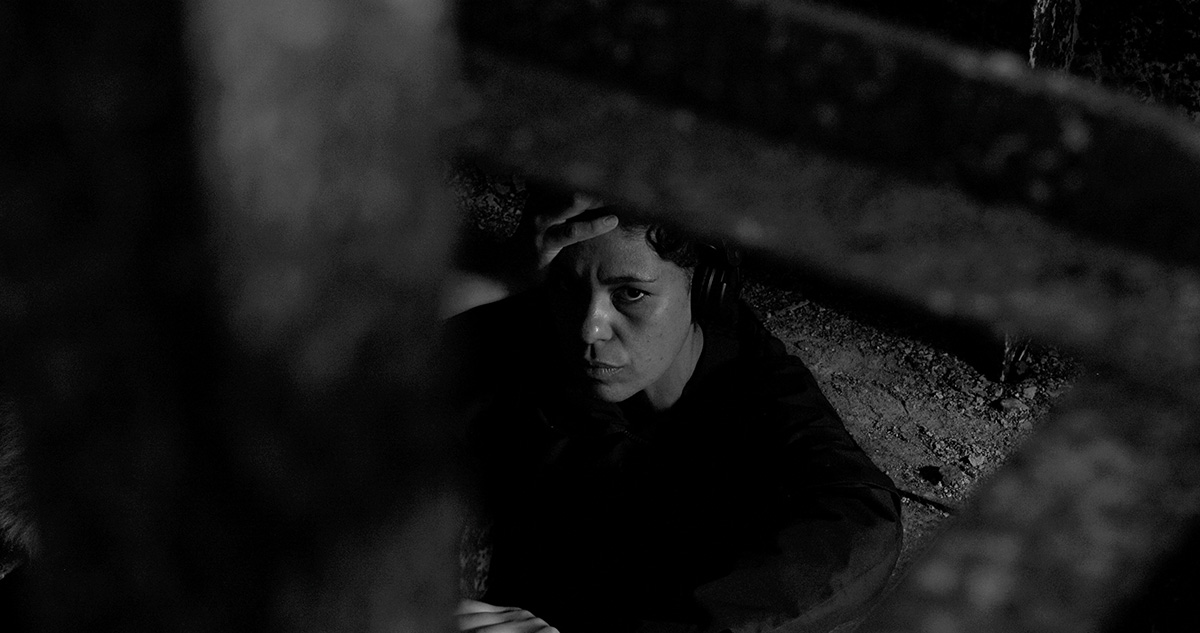
Lydia Rigaux
The Other, can I lift the border?
Documentaire | digital | couleur et n&b | 29:0 | Belgique | 2023
‘The Other, can I lift the border?’ is a hybrid documentary in which the filmmaker, Lydia Rigaux, and performer Luanda Casella explore how the perceived border between the self and the other can be lifted. During a fictional trip to Le Havre they reflect on the subject. In additional calls and talks we hear personal stories how the interviewees experience their relation towards others.
Lydia Rigaux (1980) is a filmmaker born and living in Ghent, Belgium. Her work navigates between fiction and documentary. An idea can develop from a story or reality. Yet during the process of making the film the line between those two becomes thinner. Fictional or real elements introduce themselves equipollent. The films she makes have tense subjects like trauma, marginalized communities, destruction, lethargy. But Lydia translates these topics in a poetic way, making them a visual experience that connects with the viewer.
Jessica Sarah Rinland
Catalogue : 2018Black Pond | Documentaire | 16mm | couleur et n&b | 43:0 | Argentine, Royaume-Uni | 2017
Jessica Sarah Rinland
Black Pond
Documentaire | 16mm | couleur et n&b | 43:0 | Argentine, Royaume-Uni | 2017
The film explores a common land in the south of England, and the natural history society who occupy it. After two years of filming, the rushes were shown to the society - their memories and responses were recorded and used as the film’s narration. The film does not give access to complete knowledge of the history of humans within the area. Instead, it explores more generally, human’s relationship with and within landscape and nature.
Argentine-British artist filmmaker, Jessica Sarah Rinland has exhibited work in galleries, cinemas, film festivals and universities internationally including New York Film Festival, BFI London Film Festival, Rotterdam, Oberhausen, Edinburgh International Film Festival and Bloomberg New Contemporaries. She has received grants from Arts Council England, Wellcome Trust, Elephant Trust and elsewhere. Residencies include MacDowell Colony, Kingston University, Locarno Academy and Berlinale Talents. Her most recent multi-screen, randomized installation We Account The Whale Immortal was exhibited at Somerset House, London in 2016.
Catalogue : 2015Adeline For Leaves | Film experimental | 16mm | couleur et n&b | 13:30 | Argentine | 2014
Jessica Sarah Rinland
Adeline For Leaves
Film experimental | 16mm | couleur et n&b | 13:30 | Argentine | 2014
Interrogating memory, horticultural, and philosophical elements through her endeavors, 11-year-old botanical prodigy Adeline’s mission is to propagate the mythical blue-flowering Echinopsis Subdenudata.
Argentinian/British filmmaker, Jessica Sarah Rinland has exhibited in galleries, cinemas, and film festivals internationally. Her short film NULEPSY screened at Bloomberg New Contemporaries, NYFF, LFF, IFFR, AAFF and was broadcast by Canal+. She won ICA’s Best Experimental Film for ELECTRIC OIL at LSFF 2013. She had a solo exhibition DISSECTING THE EXPLODING WHALE at LIMBO Arts in 2013. She was Filmmaker in Residence at Kingston University, UK and resident at the MacDowell Colony, US in 2014. Her short film ADELINE FOR LEAVES won the Arts + Science award at Ann Arbor Film Festival, also playing at Oberhausen, Edinburgh, New Horizons and Encounters. With funding from the Wellcome Trust, she co-curated a symposium on the subject of cetaceans at the National Maritime Museum, UK in September 2014.
Elli Rintala
Catalogue : 2009Väylä | Doc. expérimental | 16mm | couleur | 25:5 | Finlande | 2008

Elli Rintala
Väylä
Doc. expérimental | 16mm | couleur | 25:5 | Finlande | 2008
Un pétrolier navigue le long du golfe de Finlande. Après avoir vogué en haute mer, le navire change de cap pour une raffinerie de pétrole sur la côte. Lors de ce passage, l?homme, la technologie et la nature se confrontent les uns aux autres.
Elli Rintala est née en 1978. Elle étudie à l?Université des Arts et du Design d?Helsinki (Finlande) depuis 2004. Parmi ses récentes réalisations, citons notamment le documentaire « Eilisen eväät » (2005).
Simon Ripoll-hurier
Catalogue : 2021Age of Heroes | Documentaire | hdv | couleur | 18:30 | France | 2020
Simon Ripoll-hurier
Age of Heroes
Documentaire | hdv | couleur | 18:30 | France | 2020
À l'est de Skopje se trouve une petite place tranquille, où l'on peut parfois entendre l’écho d'une musique orchestrale. Si vous suivez le son, il vous mène à un grand studio. Le "Film & Music Ensemble" (FAME’s project) de Skopje se spécialise dans la musique de film. Une centaine de musiciens, ingénieurs du son, et autres participants viennent tous les jours enregistrer des musiques du monde entier. Les compositeurs assistent généralement aux séances par visioconférence. En une seule journée, on peut passer d'une série télévisée française à une production de Bollywood. Suivant un mécanisme sans faille, l'orchestre produit en permanence de la musique pour accompagner les images et leur donner une tonalité émotionnelle. Sur la petite place qui jouxte ce grand studio, la vie suit son cours dans une indifférence tranquille.
Simon Ripoll-Hurier (né en 1985) travaille dans le champ des arts visuels et développe une pratique à la frontière entre la musique, la radio et le cinéma, traque les situations d'écoute. De 2014 à 2017, il a développé "Diana", un projet de recherche qui inclut film, vidéo, performance et radio. Il travaille actuellement sur un film reliant la Silicon Valley d'aujourd'hui aux expériences parapsychologiques menées autrefois par la CIA. Son travail a été présenté dans divers festivals, biennales, musées, galeries, et diffusé à la radio. Il joue également avec Les Agamemnonz, un groupe de surf music instrumentale, et a cofondé *DUUU, une webradio gérée par des artistes.
Sam Risley
Catalogue : 2023Coppice | Doc. expérimental | dcp | couleur et n&b | 32:42 | Royaume-Uni | 2022
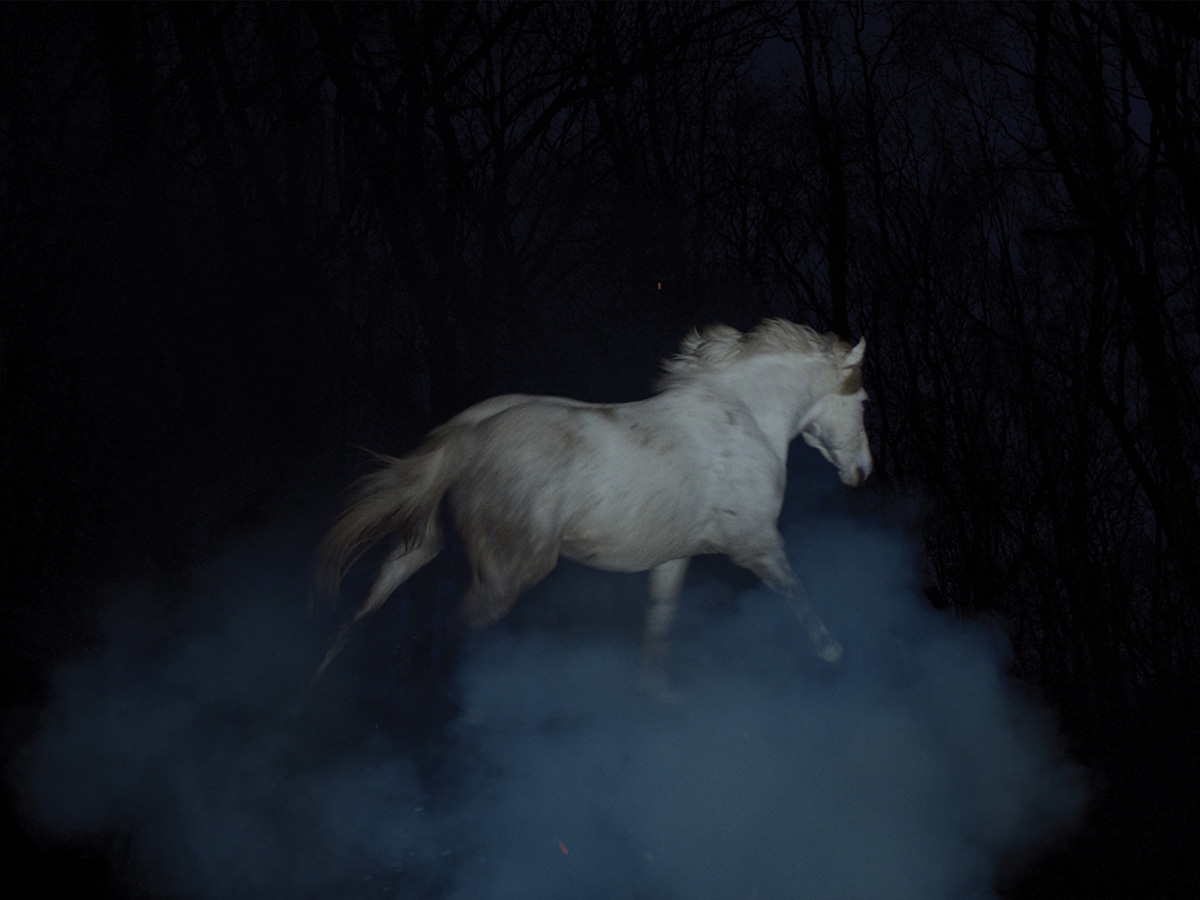
Sam Risley
Coppice
Doc. expérimental | dcp | couleur et n&b | 32:42 | Royaume-Uni | 2022
It is hard to picture the scale of the iron industry of the Weald today. A large amount of the violence inflicted upon the landscape has healed, only expressing its scars when you know what to look for. However, beginning in the early 16th century, vast quantities of iron were extracted from the area shaping the landscape, the human history and the nonhuman ecosystem to this day. Coppice (2022) is a film rooted in a feeling of psychic dislocation with land. This feeling lead Sam Risley to begin a practise of monthly visits to a small woodland called Cutaway Wood located within the Weald. What began as an attempt at re-enchantment, culminated in a film focused on the industrial history inscribed in the topography of the woodland. Coppice weaves together footage of a year spent watching Cutaway change with the seasons, with sounds captured both above and below the canopy, all the way down into the earth itself. The result is a film poem that conjures the ghosts of the landscape.
Sam Risley works across moving-image, installation, sculpture and written text. His work centres around narratives of renewal, with a focus on ecological restoration within landscapes shaped by violent capitalist practises. Friends, family and mythic or historical figures frequently populate his works. He has exhibited at The Baltic, The Horse Hospital, APT Gallery, Sluice Biennial, IMT Gallery and GAO Gallery among others and has had texts published by Ca-Foscari Press, Da Thirst and Morning Baby.
Dominik Ritszel
Catalogue : 2016Pogłos | Vidéo | hdv | couleur | 14:30 | Pologne | 2015
Dominik Ritszel
Pogłos
Vidéo | hdv | couleur | 14:30 | Pologne | 2015
Ritszel in his movie Reverb cleans view of audial perception. He introduce the viewer to his laboratory, spread through whole city. Process of the civilization has been reverse and for a moment, receiver gain privilege of sharpen hearing,. Sounds act on the same rules as they act in horror movies. They grow from what is known. They grow stronger and stronger, minute after minute. They become powerful and than they spread. Dynamic of the horror movie shows, that what scarry the most are not perfectly design monsters but minor, accumulative sounds. Creak of slowly opening wordrobe doors,expending floor planks under footsteps, TV which swich on itself, scraping, grating, crashing, and the most, sudden, ominous, dead silent.
Dominik Ritszel was born in 1988 in Rybnik. He studied at the Faculty of Graphics in the Institute of Arts at the University of Silesia in Cieszyn and at the Academy of Fine Arts in Katowice, where he did graphic arts. His works were exhibited, among others, at international video art festivals Les Rencontres Internationales (Gaîté Lyrique, Palais de Tokyo, Paris), Proyector, International Video Art Festival (Spain, Italy, Portugal) and Video Art Review THE 02. He participated in group exhibitions - in the Show Off Section at the Krakow Photomonth Festival (2013), The increased Difficulty od Concretation in Prague (2015), What’s Hidden in National Gallery of Art (2015), Curators Network in the Museum of Contemporary Art (MOCAK) in Krakow (2012), Mum, I just really need to focus on my art right now in the Arsenał Gallery in Poznan (2012), among others, and in a joint exhibition presenting works of young Silesian artists Milk Teeth in the BWA Contemporary Art Gallery in Katowice (2013). He had individual exhibitions in the Centre for Contemporary Arts Kronika in Bytom, in Grey Gallery in Cieszyn, Grey House Gallery in Krakow and in the Silesian Museum in Katowice. He was chosen among the three finalists of the Talenty Trójki 2013 contest in the Visual Arts category, he was short-listed for the Grey House Foundation Prize. In 2014 he was granted the Young Poland Programme scholarship. In spring 2014 as an artist in residence he stayed in the A-I-R Laboratory in the Centre for Contemporary Art Ujazdowski Castle where he produced Versus, showed in Bank Pekao Project Room in Warsaw. In 2015 he participated in group exhibition Waiting for better times Curatorated by Magda Kardasz (Zachęta Project Room, Warsaw). During of the 8th edition of Biennale of Young Artists RYBIE OKO his video Reverb received special award. He has been crowned the 2015 winner of the Young European Artist Trieste Contemporanea Award. His next individual exhibition will take place in Studio Tomaseo (Italy) 26th of March.
Catalogue : 2015Film o szkole | Fiction expérimentale | hdv | couleur | 8:59 | Pologne | 2014
Dominik Ritszel
Film o szkole
Fiction expérimentale | hdv | couleur | 8:59 | Pologne | 2014
The video was recorded in primary school, which I graduated in 2003. This work is inspired by architectural elements in space of the school. I am mainly interested about functionality of certain spaces of the school, for example halls, passages, gyms, dressing room and also how institutional rules and statutes can take a form of game.
Dominik Ritszel was born in 1988 in Rybnik. He studied at the Faculty of Graphics in the Institute of Arts at the University of Silesia in Cieszyn and at the Academy of Fine Arts in Katowice, where he did graphic arts. His works were exhibited, among others, at international video art festivals Les Rencontres Internationales (Gaîté Lyrique, Palais de Tokyo, Paris) and Video Art Review THE 02 Spaces as a tool for shaping social attitudes. He participated in group exhibitions - in the Show Off Section at the Krakow Photomonth Festival (2013), Curators Network in the Museum of Contemporary Art (MOCAK) in Krakow (2012), Mum, I just really need to focus on my art right now in the Arsenał Gallery in Poznan (2012), among others, and in a joint exhibition presenting works of young Silesian artists Mleczne Zęby (Milk Teeth) in the BWA Contemporary Art Gallery in Katowice (2013). He had individual exhibitions in the Centre for Contemporary Arts Kronika in Bytom and in the Silesian Museum in Katowice. He was chosen among the three finalists of the Talenty Trójki 2013 contest in the Visual Arts category, he was short-listed for the Grey House Foundation Prize. In 2014 he was granted the Young Poland Programme scholarship. In spring 2014 as an artist in residence he stayed in the A-I-R Laboratory in the Centre for Contemporary Art Ujazdowski Castle where he produced Versus, showed in Ujazdowski Castle in Bank PEKO Project Room (Warsaw).
Catalogue : 2014Preludium | Vidéo | hdv | couleur | 7:57 | Pologne | 2013
Dominik Ritszel, Dominik Ritszel
Preludium
Vidéo | hdv | couleur | 7:57 | Pologne | 2013
Video explore the relations between son and father (student/master), which is bring to inconspicuous, childish game. Situation plays in family house, where actors are my father, brother and myself. ?Preludium? is a memoir of my request to my father, who refused to teach me play piano, saying, that is too late.
In 2008 I began study on Academy of Fine Arts in Katowice. My first individual exhibition ?See you all? took place in CSW Kronika in Bytom. In 2012 I took part in group exhibition; ?Whoever seen, whoever knows?, (CSW Kronika, Bytom). I was invited to take part in project ?Public space as tool for shaping social attitudes? in Chisinau (Moldova) where I made film ?Campers?. My second individual exhibition was in Częstochowa (Centrum Promocji Młodych); entitled ?No fun?. In collaboration with French curator Lore Gablier, I was co-create film ?D?eux?, based on two weeks traveling through France and England. I was chosen, as one of 20 polish artist, in polish edition of project Curators Network, which intend to promote selected artists by international group of curators in Poland and abroad. In 2013 I was participant in group exhibition young Silesian artists ?Milk Teeth? in BWA (Katowice) where I showed my film ?Preludium?. I was chosen, as one of 10 artist, in project Showoff?13. On behalf on project Showoff (cooperating with Photo Month in Krakow) I was showing my works in gallery Grey house Exhibition was entitled ?Eine kleine Werke?.
Dominik Ritszel
Catalogue : 2023Ziemia wch?onie to wszystko | Vidéo expérimentale | mp4 | couleur | 8:48 | Pologne | 2022
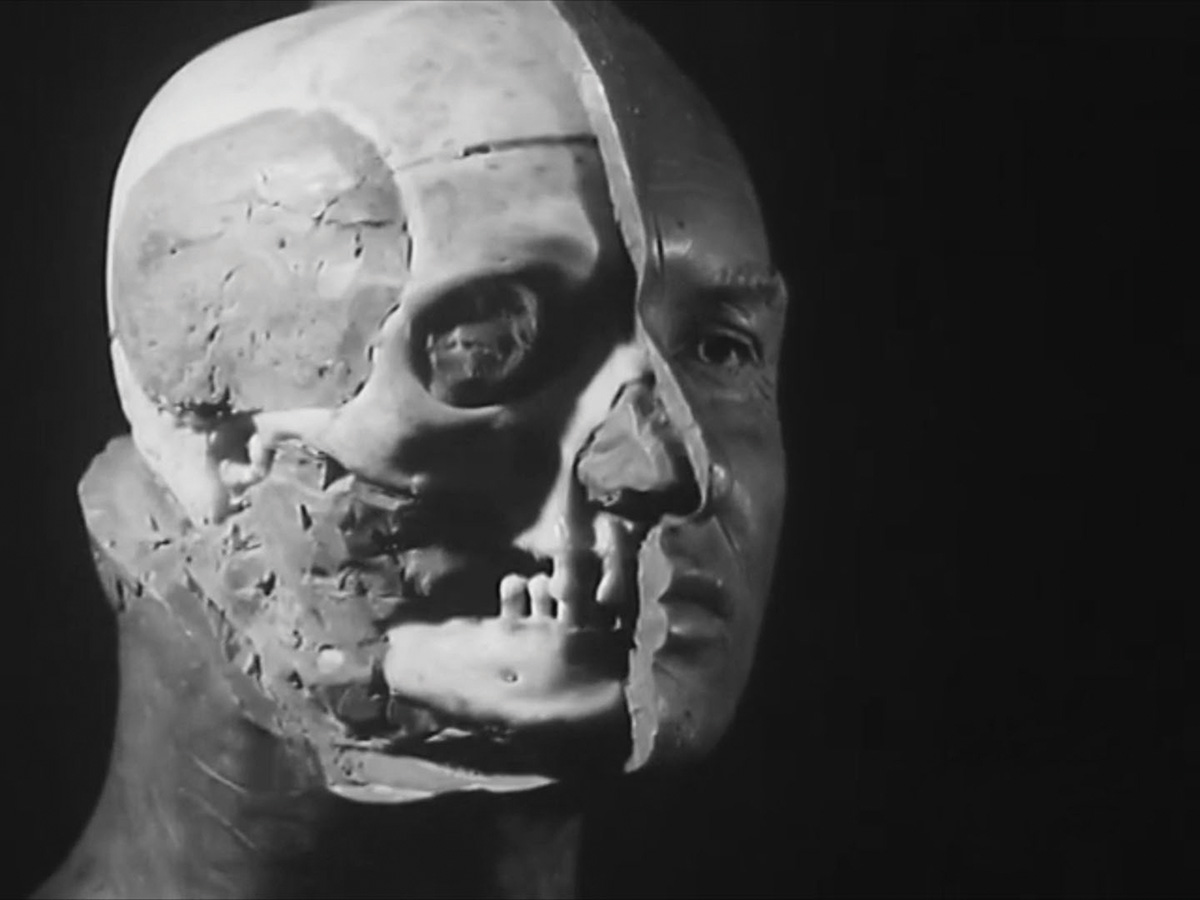
Dominik Ritszel
Ziemia wch?onie to wszystko
Vidéo expérimentale | mp4 | couleur | 8:48 | Pologne | 2022
The change of the political system that occurred in Poland in the early 1990s brought not only hopes related to the social and economic transformation, but also anxieties and fears. At the time, such fears were treated as evidence of incompatibility with the new capitalist order and thus consistently relegated to the margins of public debate. The film is an attempt to recall the traumatic experiences of this period. In this context, the concept of trauma is directly related to the process of repression, the essence of which coincides with the naturalizing, hegemonic discourse which justifies the social costs of transformation as necessary on the way to modernization. "The Earth Will Swallow it All" is a story about Upper Silesia. It was based on the accounts of mining families, the archives of the Polish Film Chronicle, 3D animations and seismographic charts. The collected materials connect into a description of the social catastrophe, which is shown from the perspective of people who in the past were united by the working-class community.
Dominik Ritszel (b. 1988) active in the area of visual arts. Working with film and video instalations. B.A. Graphics M.A. (2013), doctoral degree (2020) graduated at the Academy of Fine Arts in Katowice. Winner of the scholarship Young Poland, listed on the Forbes lists 30 Under 30 Europe, Prize winner of the Trieste Contemporanea Award 2015. Lives and works in Katowice, Poland.
Catalogue : 2022Studium postaci | Vidéo | mp4 | couleur | 7:46 | Pologne | 2020
Dominik Ritszel
Studium postaci
Vidéo | mp4 | couleur | 7:46 | Pologne | 2020
Figure Study is a video collage consisting of found footage and the artist's original recordings. It consists of a video installation, archival material and training videos filmed by the US government during the Cold War, as well as recordings of the Spartakiada, a mass sports competition organised in the Eastern Bloc during the period of Soviet domination. In his work, Dominik Ritszel manipulates the content of these materials by juxtaposing them with his own images, focusing on individual narrative elements as well as formal techniques. The issues raised in the work, ie. public safety, physical hygiene and a healthy lifestyle outline the political meanings attributed to the body, especially the male body. The figurative representations of unified military force and society as a mass aim to reveal the hidden content contained in the archival recordings and reconstruct a vision of patriarchal society.
(b. 1988) active in the area of visual arts. Working with film and video instalations. B.A. Graphics M.A. (2013) graduated at Academy of Fine Arts in Katowice, (2020) Doctoral degree in fine arts at Academy of Fine Arts in Katowice. Winner of the scholarship YOUNG POLAND (2014) and the Polish Ministry of Culture and National Heritage (2017). Prize winner of the Trieste Contemporanea Award 2015, Listed in Forbes magazine in category of Arts (2016). Lives and works in Katowice, Poland. Co-op with Szara Gallery in Warsaw.
Dominik Ritszel, Dominik Ritszel
Catalogue : 2016Pogłos | Vidéo | hdv | couleur | 14:30 | Pologne | 2015
Dominik Ritszel
Pogłos
Vidéo | hdv | couleur | 14:30 | Pologne | 2015
Ritszel in his movie Reverb cleans view of audial perception. He introduce the viewer to his laboratory, spread through whole city. Process of the civilization has been reverse and for a moment, receiver gain privilege of sharpen hearing,. Sounds act on the same rules as they act in horror movies. They grow from what is known. They grow stronger and stronger, minute after minute. They become powerful and than they spread. Dynamic of the horror movie shows, that what scarry the most are not perfectly design monsters but minor, accumulative sounds. Creak of slowly opening wordrobe doors,expending floor planks under footsteps, TV which swich on itself, scraping, grating, crashing, and the most, sudden, ominous, dead silent.
Dominik Ritszel was born in 1988 in Rybnik. He studied at the Faculty of Graphics in the Institute of Arts at the University of Silesia in Cieszyn and at the Academy of Fine Arts in Katowice, where he did graphic arts. His works were exhibited, among others, at international video art festivals Les Rencontres Internationales (Gaîté Lyrique, Palais de Tokyo, Paris), Proyector, International Video Art Festival (Spain, Italy, Portugal) and Video Art Review THE 02. He participated in group exhibitions - in the Show Off Section at the Krakow Photomonth Festival (2013), The increased Difficulty od Concretation in Prague (2015), What’s Hidden in National Gallery of Art (2015), Curators Network in the Museum of Contemporary Art (MOCAK) in Krakow (2012), Mum, I just really need to focus on my art right now in the Arsenał Gallery in Poznan (2012), among others, and in a joint exhibition presenting works of young Silesian artists Milk Teeth in the BWA Contemporary Art Gallery in Katowice (2013). He had individual exhibitions in the Centre for Contemporary Arts Kronika in Bytom, in Grey Gallery in Cieszyn, Grey House Gallery in Krakow and in the Silesian Museum in Katowice. He was chosen among the three finalists of the Talenty Trójki 2013 contest in the Visual Arts category, he was short-listed for the Grey House Foundation Prize. In 2014 he was granted the Young Poland Programme scholarship. In spring 2014 as an artist in residence he stayed in the A-I-R Laboratory in the Centre for Contemporary Art Ujazdowski Castle where he produced Versus, showed in Bank Pekao Project Room in Warsaw. In 2015 he participated in group exhibition Waiting for better times Curatorated by Magda Kardasz (Zachęta Project Room, Warsaw). During of the 8th edition of Biennale of Young Artists RYBIE OKO his video Reverb received special award. He has been crowned the 2015 winner of the Young European Artist Trieste Contemporanea Award. His next individual exhibition will take place in Studio Tomaseo (Italy) 26th of March.
Catalogue : 2015Film o szkole | Fiction expérimentale | hdv | couleur | 8:59 | Pologne | 2014
Dominik Ritszel
Film o szkole
Fiction expérimentale | hdv | couleur | 8:59 | Pologne | 2014
The video was recorded in primary school, which I graduated in 2003. This work is inspired by architectural elements in space of the school. I am mainly interested about functionality of certain spaces of the school, for example halls, passages, gyms, dressing room and also how institutional rules and statutes can take a form of game.
Dominik Ritszel was born in 1988 in Rybnik. He studied at the Faculty of Graphics in the Institute of Arts at the University of Silesia in Cieszyn and at the Academy of Fine Arts in Katowice, where he did graphic arts. His works were exhibited, among others, at international video art festivals Les Rencontres Internationales (Gaîté Lyrique, Palais de Tokyo, Paris) and Video Art Review THE 02 Spaces as a tool for shaping social attitudes. He participated in group exhibitions - in the Show Off Section at the Krakow Photomonth Festival (2013), Curators Network in the Museum of Contemporary Art (MOCAK) in Krakow (2012), Mum, I just really need to focus on my art right now in the Arsenał Gallery in Poznan (2012), among others, and in a joint exhibition presenting works of young Silesian artists Mleczne Zęby (Milk Teeth) in the BWA Contemporary Art Gallery in Katowice (2013). He had individual exhibitions in the Centre for Contemporary Arts Kronika in Bytom and in the Silesian Museum in Katowice. He was chosen among the three finalists of the Talenty Trójki 2013 contest in the Visual Arts category, he was short-listed for the Grey House Foundation Prize. In 2014 he was granted the Young Poland Programme scholarship. In spring 2014 as an artist in residence he stayed in the A-I-R Laboratory in the Centre for Contemporary Art Ujazdowski Castle where he produced Versus, showed in Ujazdowski Castle in Bank PEKO Project Room (Warsaw).
Catalogue : 2014Preludium | Vidéo | hdv | couleur | 7:57 | Pologne | 2013
Dominik Ritszel, Dominik Ritszel
Preludium
Vidéo | hdv | couleur | 7:57 | Pologne | 2013
Video explore the relations between son and father (student/master), which is bring to inconspicuous, childish game. Situation plays in family house, where actors are my father, brother and myself. ?Preludium? is a memoir of my request to my father, who refused to teach me play piano, saying, that is too late.
In 2008 I began study on Academy of Fine Arts in Katowice. My first individual exhibition ?See you all? took place in CSW Kronika in Bytom. In 2012 I took part in group exhibition; ?Whoever seen, whoever knows?, (CSW Kronika, Bytom). I was invited to take part in project ?Public space as tool for shaping social attitudes? in Chisinau (Moldova) where I made film ?Campers?. My second individual exhibition was in Częstochowa (Centrum Promocji Młodych); entitled ?No fun?. In collaboration with French curator Lore Gablier, I was co-create film ?D?eux?, based on two weeks traveling through France and England. I was chosen, as one of 20 polish artist, in polish edition of project Curators Network, which intend to promote selected artists by international group of curators in Poland and abroad. In 2013 I was participant in group exhibition young Silesian artists ?Milk Teeth? in BWA (Katowice) where I showed my film ?Preludium?. I was chosen, as one of 10 artist, in project Showoff?13. On behalf on project Showoff (cooperating with Photo Month in Krakow) I was showing my works in gallery Grey house Exhibition was entitled ?Eine kleine Werke?.
Paul Ritt
Catalogue : 2015Connected | Vidéo | hdv | noir et blanc | 2:2 | Pays-Bas | 2014
Paul Ritt
Connected
Vidéo | hdv | noir et blanc | 2:2 | Pays-Bas | 2014
Connected,a video/drawing of a short journey through fragments of intuitive moments. The work is about following, exploring known/unknown directions, registering, leaving traces,emerging into patterns, maps of the free spirit.
Paul Ritt was born in the Netherlands (1957). He studied monumentale vormgeving at the Academie Beeldende Kunst, Maastricht, (1980-1984). He lived and worked in Australia from 1984 -1999. After studying for the Advanced diploma of Arts in Electronics, design and interactive media at the Royal Melbourne Institute of Technology Melbourne (1997-1998), he started making short films.
Esteban Rivera Ariza
Catalogue : 2016Die Versteinerten | Vidéo | hdv | couleur | 7:27 | Colombie, Allemagne | 2015
Esteban Rivera Ariza
Die Versteinerten
Vidéo | hdv | couleur | 7:27 | Colombie, Allemagne | 2015
An interview with David Stodolsky, member of the Cryonics Institute, who guides us trough the Building-Monument built over the previous house of Walter Gropius in Dessau, Germany. Renovated by Bruno Fioretti Marquez Architects in 2008, the construction reproduces the original volume of Gropius` house. In the film, the house works as a metaphor of what is fossilized. The idea of Modernism remains in this case in a fossil state, and survives in time as a trace of what once was. This video is part of a reflection on the act of conservation (of ideas, of bodies) as a human activity.
Esteban Rivera, Bogotá, Colombia (1981). He is finishing his Master studies in Art and Media in the Arts University in Berlin (Universität der Künste, Berlin) under Prof. Ai Weiwei and also as student of Prof. Anna Anders. He studied Graphic Design and a Master in Arts in the National University of Colombia (Universidad Nacional de Colombia). He makes films and videoinstallation and currently works in Berlin.
Jorge Rivero
Catalogue : 2010La presa | Doc. expérimental | 35mm | couleur | 20:0 | Espagne | 2009

Jorge Rivero
La presa
Doc. expérimental | 35mm | couleur | 20:0 | Espagne | 2009
Ben Rivers
Ben Rivers
Catalogue : 2020Ghost Strata | Doc. expérimental | 16mm | couleur | 45:44 | Royaume-Uni, 0 | 2019
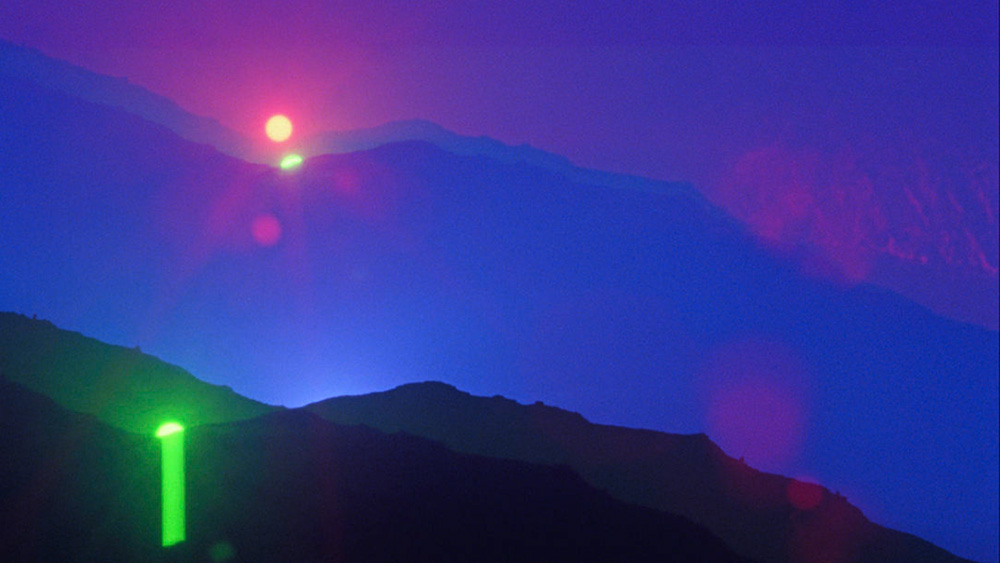
Ben Rivers
Ghost Strata
Doc. expérimental | 16mm | couleur | 45:44 | Royaume-Uni, 0 | 2019
Le terme “Ghost Strata” désigne les éléments manquants des strates rocheuses qui, malgré leur absence, offrent des indices de ce qui s’y trouvait autrefois. Le film est divisé en fonction des mois de l’année au cours desquels les images ont été filmées. Filmé en divers endroits du globe, retraçant les divers mouvements personnels du cinéaste, Ghost Strata explore les différentes échelles d’impact de la présence de l’humanité sur la terre dans le passé, le présent et l’avenir. Les sons et les textes trouvés créent une méditation sur le temps, la mémoire, les restes et l’extinction.
Né en 1972, Ben Rivers est un artiste britannique primé pour ses films dans de nombreux festivals. Il est notamment lauréat du Grand Prix à Art Basel pour son film Sack Barrow et a été sélectionné à la Mostra de Venise en compétition officielle pour Two Years at Sea en 2011. En 2013, il a fait l’objet d’un focus lors du festival Hors Pistes au Centre Pompidou. Ben Rivers tourne en 16mm et s’intéresse à des individus ou communautés vivant en marge de la société et propose un travail à la lisière du documentaire, frôlant l’ethnographie, doté d’une grande puissance visuelle. Ainsi, empruntant une voie plus picturale que narrative, son œuvre se place au cœur des enjeux contemporains où l'on constate l'émergence sensible d'une approche documentaire expérimentale, qui se nourrit d'apports artistiques multiples. Cette forme hybride lui a notamment permis de se déplacer de la traditionnelle salle de cinéma pour s'exposer dans les centres d'art à travers des installations.
Ben Rivers
Catalogue : 2017There is a Happy Land Further Awaay | Film expérimental | 16mm | couleur et n&b | 20:0 | Royaume-Uni | 2015
Ben Rivers
There is a Happy Land Further Awaay
Film expérimental | 16mm | couleur et n&b | 20:0 | Royaume-Uni | 2015
THERE IS A HAPPY LAND FURTHER AWAAY (20 mins, S16, col/b+w, 2015) There Is A Happy Land Further Awaay (2015), captures the landscapes of the remote volcanic Republic of Vanuatu archipelago, before they were devastated by Cyclone Pam in early 2015, the footage becoming a ghostly document of an ecosystem now irrevocably altered. A hesitant female voice reads a poem by Henri Michaux, recounting a life lived in a distant land, full of faltering and mistakes. Island imagery of active volcanoes, underwater WW2 debris, children playing, and wrecked boats transform into intangible digital recollections of the island, made on the opposite side of the world. Images of the eroded land merge with eroding film, a lone figure on a boat drifts at sea.
Ben Rivers (born in 1972) is an artist and experimental filmmaker based in London. His work has been shown in many film festivals and galleries around the world and has won numerous awards. His work ranges from themes about exploring unknown wilderness territories to candid and intimate portrayals of real-life subjects. Rivers`s practice as a filmmaker treads a line between documentary and fiction. Often following and filming people who have in some way separated themselves from society, the raw film footage provides Rivers with a starting point for creating oblique narratives imagining alternative existences in marginal worlds. Rivers uses near-antique cameras and hand develops the 16 mm film, which shows the evidence of the elements it has been exposed to – the materiality of this medium forming part of the narrative.
Ben Rivers
Catalogue : 2021Look Then Below | Film expérimental | 16mm | couleur | 22:30 | Royaume-Uni | 2019
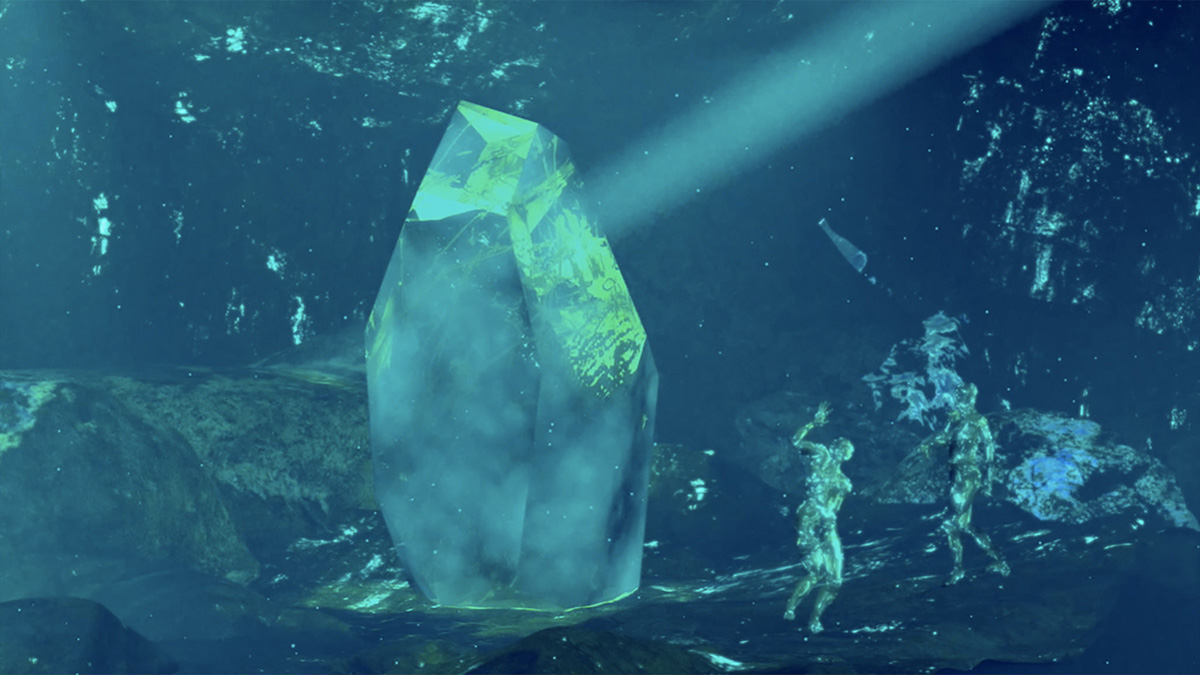
Ben Rivers
Look Then Below
Film expérimental | 16mm | couleur | 22:30 | Royaume-Uni | 2019
Les films de Ben Rivers étudient ce qui semble venir d’un autre monde, à la recherche de lieux et d'histoires échappant aux conventions quotidiennes de la réalité. "Look Then Below" a été filmé dans un Somerset transformé en une île colorée et envahie par la brume, sur une mer d’huile, et avec une grotte baignée par une lueur souterraine. Là, le temps semble s'arrêter. Après "Slow Action" et "Urth", il d’agit du dernier volet d'une trilogie développée avec Mark von Schlegell, auteur américain de science-fiction.
Ben Rivers a étudié les beaux-arts à la Falmouth School of Art (Royaume-Uni): après la sculpture, il s’est tourné vers la photographie et le film en super8. Après avoir obtenu son diplôme, il a appris par lui-même la réalisation et le traitement manuel des films 16mm. Sa pratique en tant que réalisateur se situe entre le documentaire et la fiction. Souvent, il suit et filme des personnes qui, d'une manière ou d'une autre, se sont séparées de la société. Des images brutes lui fournissent un point de départ pour créer des récits obliques, imaginant des existences alternatives dans des mondes marginaux. Il a remporté de nombreux prix, dont le FIPRESCI International Critics Prize, 68e Mostra de Venise (Italie), pour son premier long métrage, "Two Years At Sea"; le Baloise Art Prize, Art Basel 42, Bâle (Suisse) [2011]; la présélection pour le Jarman Award, Londres (Royaume-Uni) [2010/2012]; et le Paul Hamlyn Foundation Award for Artists, 2010. Parmi ses expositions récentes, citons: "Slow Action", Hepworth Wakefield, Wakefield (Royaume-Uni) [2012]; "Sack Barrow", Hayward Gallery, Londres (Royaume-Uni) [2011]; "Slow Action", Mattâ's Gallery, Londres (Royaume-Uni), et Gallery TPW, Toronto (Canada) [2011]; et "A World Rattled of Habit", A Foundation, Liverpool (Royaume-Uni) [2009]. Il a notamment participé au Courtisane and Film Fest, Gand (Belgique); à la Mostra internazionale del Nuovo Cinema di Pesaro (Italie); au London Film Festival, Londres (Royaume-Uni); au Tirana International Film Festival, Tirana (Albanie); à Punto de Vista, Pampelune (Espagne); à Indielisboa, Lisbonne (Portugal); et au Milano Film Festival, Milan (Italie). En 1996, il a co-fondé la Brighton Cinematheque (Royaume-Uni), dont il a ensuite été co-programmateur jusqu'à sa fermeture, en 2006. Cette institution était réputée pour sa programmation unique de films, depuis ses débuts jusqu'aux derniers films et vidéos d'auteur.
Catalogue : 2021The House Was Quiet | Film expérimental | 16mm | couleur | 4:25 | Royaume-Uni | 2020
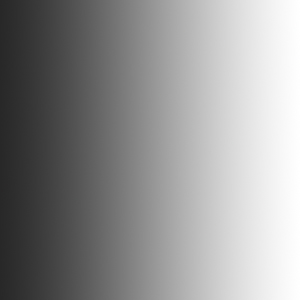
Ben Rivers
The House Was Quiet
Film expérimental | 16mm | couleur | 4:25 | Royaume-Uni | 2020
Les éléments d'une maison: une porte, le plafond miteux, les planchers de bois, le portrait d'une petite fille. Et le crépitement de la pellicule 16mm sur laquelle elles sont imprimées, aussi "concrète" que les objets qu'elle filme, et en opposition à l'effacement des choses dans les pixels du numérique. Les vers d'un poème de Wallace Stevens accompagnent les images: "La maison était tranquille et le monde était calme/ le lecteur devint le livre/ et la nuit d'été fut comme l’être conscient du livre". Dans la succession des vers - et dans la répétition des jours enfermés dans la maison pendant le confinement - le lecteur, le livre, la maison et la nuit d'été ne font plus qu'un, bercés par le crépitement du film.
Ben Rivers a étudié les beaux-arts à la Falmouth School of Art (Royaume-Uni): d'abord la sculpture, avant de se tourner vers la photographie et le film super8. Après avoir obtenu son diplôme, il a appris en autodidacte la réalisation et le traitement manuel des films 16 mm. Sa pratique de réalisateur se situe entre le documentaire et la fiction. Souvent, il suit et filme des personnes qui, d'une manière ou d'une autre, se sont séparées de la société. Les images brutes lui fournissent un point de départ pour créer des récits obliques, imaginant des existences alternatives dans des mondes marginaux. Il est le lauréat de nombreux prix, dont le Prix de la critique internationale FIPRESCI, 68e Mostra de Venise (Italie) pour son premier long métrage, "Two Years At Sea"; le Baloise Art Prize, Art Basel 42, Bâle (Suisse) [2011]; la présélection pour le Jarman Award 2010/2012, Londres (Royaume-Uni) ; et le Paul Hamlyn Foundation Award for Artists, Londres (Royaume-Uni) [2010]. Parmi ses expositions récentes, citons: "Slow Action", Hepworth Wakefield (Royaume-Uni) [2012]; "Sack Barrow", Hayward Gallery, Londres (Royaume-Uni) [2011]; "Slow Action", Mattâ's Gallery, Londres (Royaume-Uni), et Gallery TPW, Toronto (Canada) [2011]; et "A World Rattled of Habit", A Foundation, Liverpool (Royaume-Uni) [2009]. Il a notamment participé au Courtisane Festival, Gand (Belgique); au Festival international du nouveau cinéma de Pesaro (Italie); au London Film Festival, Londres (Royaume-Uni); au Tirana International Film Festival (Albanie); à Punto de Vista, Pampelune (Espagne); à Indielisboa, Lisbonne (Portugal); et au Milano Film Festival, Milan (Italie). En 1996, il a co-fondé la Brighton Cinematheque (Royaume-Uni), dont il a ensuite été co-programmateur jusqu'à sa fermeture, en 2006. Cette institution est réputée pour sa programmation unique de films, depuis ses débuts jusqu'aux plus récents films et vidéos d'artistes.
Ben Rivers
Catalogue : 2019Trees Down Here | Doc. expérimental | 16mm | couleur | 13:56 | Royaume-Uni | 2018
Ben Rivers
Trees Down Here
Doc. expérimental | 16mm | couleur | 13:56 | Royaume-Uni | 2018
Trees are the silent characters, narrating the architecture and life of Churchill College (opened in 1960) through its natural history. 6’s Cowan Court (completed in 2016) inverted the spatial and material order of the picturesque Brutalism of the original college, shifting its mineral world of brick and shuttered concrete to timber. Cowan Court’s oak, both new and old, defines its structure and in turn encloses a central court filled with recently planted birch trees. The analogue materiality of Churchill College is matched by the film which, like the architecture and landscape, leaves traces of its own development. The human habitat is seen through nature ‘ swaying trees, lost animals, birds of prey, the seasons “ to create a new dreamlike environment in which any distinction between human life, architecture and nature is erased.
Ben Rivers studied Fine Art at Falmouth School of Art, initially in sculpture before moving into photography and super8 film. After his degree he taught himself 16mm filmmaking and hand-processing. His practice as a filmmaker treads a line between documentary and fiction. Often following and filming people who have in some way separated themselves from society, the raw film footage provides Rivers with a starting point for creating oblique narratives imagining alternative existences in marginal worlds. He is the recipient of numerous prizes including: FIPRESCI International Critics Prize, 68th Venice Film Festival for his first feature film Two Years At Sea; the Baloise Art Prize, Art Basel 42, 2011; shortlisted for the Jarman Award 2010/2012; Paul Hamlyn Foundation Award for Artists, 2010. Recent exhibitions include: Slow Action, Hepworth Wakefield, 2012; Sack Barrow, Hayward Gallery, London, 2011; Slow Action, Mattâ’s Gallery, London and Gallery TPW, Toronto, 2011; A World Rattled of Habit, A Foundation, Liverpool, 2009. Artist-in-focus include Courtisane Festival; Pesaro International Film Festival; London Film Festival; Tirana Film Festival; Punto de Vista, Pamplona; Indielisboa and Milan Film Festival. In 1996 he co-founded Brighton Cinematheque which he then co-programmed through to its demise in 2006 “ renowned for screening a unique programme of film from its earliest days through to the latest artistâ’s film and video.
Ben Rivers
Catalogue : 2009Ah, Liberty! | Doc. expérimental | 16mm | noir et blanc | 16:0 | Royaume-Uni | 2008
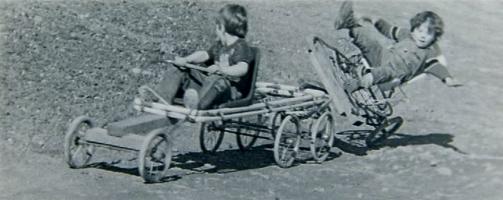
Ben Rivers
Ah, Liberty!
Doc. expérimental | 16mm | noir et blanc | 16:0 | Royaume-Uni | 2008
La maison d?une famille dans le désert, en dehors du temps ; des animaux élevés en plein air et des enfants, un bric-à-brac et la nature, le tout dans un paysage des plus sublimes. Le travail vise à représenter l?idée de liberté, qui se reflète dans l?utilisation manuelle du format scope, affaiblie par une sorte de mauvais pressentiment. Il n'y a pas d'histoire particulière, seulement des fragments de vie vécue, de rites effectués.
Ben Rivers a étudié les Beaux-Arts à la Falmouth School of Art (Royaume-Uni). Il a travaillé ensuite principalement sur des films en format 16mm. Ses ?uvres sont montrées dans des galeries et des festivals internationaux, qui lui ont décerné de nombreux prix. Parmi ses expositions récentes, signalons notamment « If » au Bloomberg Space de London, « Nought to Sixty » à l?ICA de Londres, ou encore « On Overgrown Paths » à la Permanent Gallery de Brighton.
Catalogue : 2008The Coming Race | Film expérimental | 16mm | noir et blanc | 5:0 | Royaume-Uni | 2006
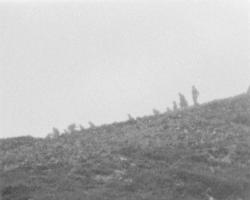
Ben Rivers
The Coming Race
Film expérimental | 16mm | noir et blanc | 5:0 | Royaume-Uni | 2006
Ce film retravaillé à la main montre des milliers de personnes faisant l'ascension d'un terrain sur une montagne rocheuse. La destination et l'objet de leur ascension restent obscurs. Un pèlerinage incertain, mystérieux et troublant pavé d'intentions inconnues. Le titre "The Coming Race" est tiré d'un roman de l'époque victorienne de E.G.E Bulwer-Lytton portant sur un peuple vivant sous une montagne.
Studied Fine Art at Falmouth School of Art. Co-founded and programmed Brighton Cinematheque from 1996-2005, while developing his artistic practice -predominantly working with moving-image. He has exhibited at many international film festivals and galleries, and won various awards, most recently Jury Prize at IFF Rotterdam. He has been the recipient of a number of commissions, most recently a London Artists Film and Video Award, for which he will make a new work: « Origin of the Species ». Current/upcoming shows include 'If' Bloomberg Space, London, 'Art with Strangers' Turnpike Gallery, Leigh, and solo show with Measure, London, and retrospective screenings in Chicago, Hull IFF and Courtisane, Ghent.
Catalogue : 2007The Hyrcynium Wood | Film expérimental | 16mm | noir et blanc | 3:0 | Royaume-Uni | 2005
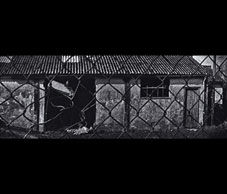
Ben Rivers
The Hyrcynium Wood
Film expérimental | 16mm | noir et blanc | 3:0 | Royaume-Uni | 2005
Un récit fragmenté et l'exploration d´espaces abandonnés, utilisant les sons et la musique pour créer un suspense et jouer avec les attentes des spectateurs.
Ben Rivers a étudié les Beaux Arts à l´Ecole des Arts des Falmouth. Depuis lors il travaille essentiellement des films 16mm qui sont projetés lors de festivals internationaux, dans des galleries et des cinémas britanniques. En 1996 il co-fonda la Cinémathèque de Bighton qu´il co-dirige/prgramme depuis.
Ben Rivers
Catalogue : 2010Origin of the Species | Doc. expérimental | 16mm | couleur | 16:0 | Royaume-Uni | 2008
Ben Rivers
Origin of the Species
Doc. expérimental | 16mm | couleur | 16:0 | Royaume-Uni | 2008
?Some things didn?t really matter, you know, some mutations didn?t matter all that much?they were neither beneficial to survival nor detrimental to survival?but if they just hung on, there?d come a time when?that was the thing that saved the day.? Charting the beginnings of the time, through the descent of man, on to an uncertain future - all shot throughout the seasons in the garden of S, who lives in the wilderness and builds contraptions.
Born 1972. Studied Fine Art at Falmouth School of Art. Co-founded and programmed Brighton Cinematheque from 1996-2006. He has exhibited at many international film festivals and galleries, winning various awards, including Tiger Award, IFF Rotterdam 2008. He has been the recipient of a number of commissions, most recently a London Artist?s Film and Video Award. Recent shows include; ?A World Rattled of Habit? A Foundation, Liverpool; ?An Entangled Bank? Talbot Rice Gallery, Edinburgh; and artist-in-focus screenings in Courtisane Festival; Pesaro International Film Festival, London Film Festival, Punto de Vista, and upcoming at Tirana Film Festival and Indielisboa.
Jacob Rivkin
Catalogue : 2017Fortunate Isles: Landings | Vidéo | hdv | noir et blanc | 3:50 | USA | 2016
Jacob Rivkin
Fortunate Isles: Landings
Vidéo | hdv | noir et blanc | 3:50 | USA | 2016
Drawing upon the name of earthly paradise in Greek mythology, the film ‘Fortunate Isles: Landings’ explores the awakening of sentience and biological complexity within digital images. To fully inhabit utopian and cinematic visions of analog & digital interpretations of landscape, ‘Fortunate Isles: Landings’ is filmed on location at sites of human achievement and continuous habitation; the level Bonneville Salt Flats, Utah and remote cliffs of Salvage, Newfoundland. During filming, performers wore chroma-key suits on location that, in post-production, allow the suit’s geometric faces to be digitally blanked and replaced with hand-drawn animation. Through the dialogue of gaps and joins created by the subtle collapsed spaces between layers of inter-narrative animation, questions of evolution, reality, and wonder begin to surface. The figures each carry a drawn experience inscribed into their outer forms. A patina of frames progressing forward echoes an imprinted memory; Landscapes are portable.
Jacob Rivkin is an interdisciplinary artist living and working in Philadelphia, PA, USA. His animations and sculptures focus on how we experience and internalize landscape, memory, and desire. His work has exhibited widely, including at the Arlington Arts Center, the Chemical Heritage Foundation Museum, the Vancouver Art Gallery, the Animation Block Party, and the National Museum of Australia. He holds lecturer positions at the University of Pennsylvania and the Mason Gross School of the Arts at Rutgers University. He received his MFA from the University of Pennsylvania in 2013 and BA from Vassar College in 2007. His awards include selection as a finalist for the anthropoScene Film Competition in 2016, a Fulbright Student Grant in 2008 to study Chinese Traditional Landscape Painting in Hangzhou, China, and the Weitzel Barber Art Travel Prize in 2006 to study Buddhist Sculpture Practices in Western China. He is a member of the OOF Animation Collective and in 2014 he was an Artist-in-Residence at the Hacktory in Philadelphia, PA.